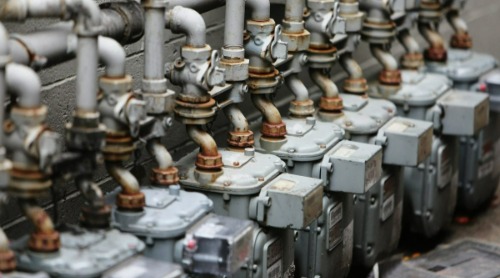THE MOST CORROSION-RESISTANT METALS FOR YOUR EQUIPMENT

When designing metal equipment, many engineers look for the strongest and most cost-effective option on the market. One factor that should also play a major role in the material selection process is corrosion resistance.
While most metals are subjected to corrosion at some point or another, there are many grades of metal that contain corrosion-resistant properties that either prolong the process or avoid it completely. While every type of metal has its benefits, corrosion resistance is an important property to have, especially because corrosion can cause many complications and expenses down the line. Here’s a closer look at some of the most resistant metals for your equipment.
Stainless Steel
Stainless steel is produced in many different grades–each containing a different amount of iron that easily oxidizes into rust. However, each grade also contains a high percentage of chromium, which is even more reactive than iron. When chromium reacts, it forms chromium oxide on the surface of the metal, which acts as a protective layer against corrosion. The more chromium found in the stainless steel alloy, the greater the resistance.
The most common grades of stainless steel include 304, 316 and 430. Grade 316 stainless steel contains 18% chromium, as well as nickel and molybdenum which add even more corrosion resistance. Because this grade is so resistant, it is often used in harsh marine environments.
Galvanized Steel
Galvanized steel is not as resistant as some other metal types: only one coated layer of zinc works to prevent corrosion in this case. The zinc coating acts as a barrier that prevents oxygen and water from making contact with the steel. While the corrosion process is significantly slowed down for galvanized steel, it will still eventually rust with time.
When it comes to the different grades of galvanized steel, the higher the grade number, the thicker the layer of zinc, which also means greater resistance to corrosion.
Aluminum
Aluminum has the power to create its own protection against corrosion. Aluminum alloys do not contain any iron, and without it, the metal cannot actually rust. However, when it’s exposed to water, it does oxidize–creating a thin coating of aluminum oxide that acts as a hard protective barrier against corrosion.
Because of its natural self-resistance to oxygen and water, aluminum is typically used for aircraft carriers, car and bike parts that are often exposed to natural weather.
Red Metals
Red metals like copper, bronze and brass often contain little to no iron, which like aluminum, means that they are not subject to rust. When these metals oxidize, they won’t corrode, but they may turn green from prolonged exposure to oxygen.
The green layer that forms over copper when oxidized is called green patina. While the color may not be appealing, this layer actually further protects the metal from corrosion.
Want to talk more about corrosion in metals?
Give us a call at 1.800.333.7519 or contact us online to speak with an ACI representative today.

